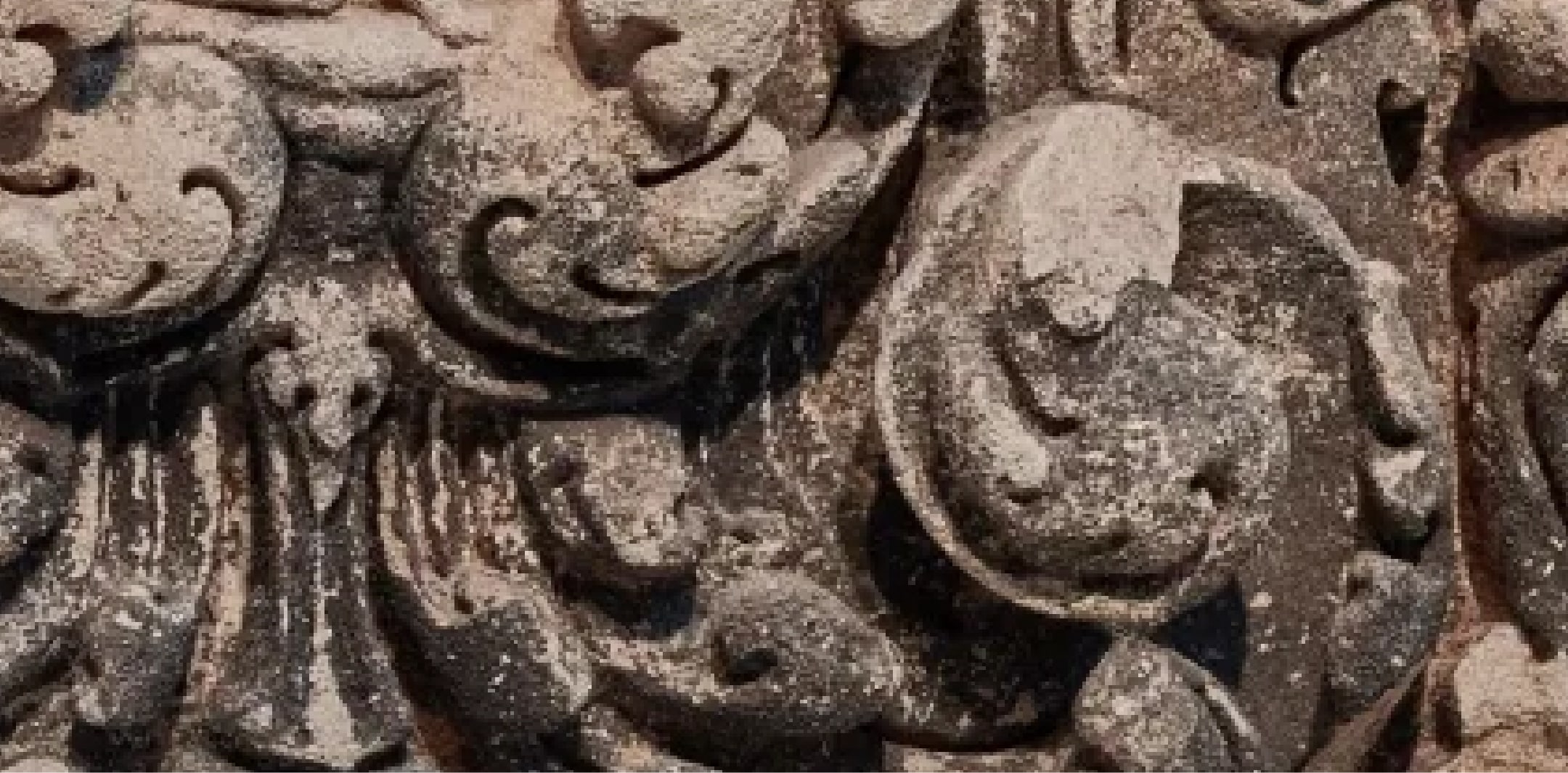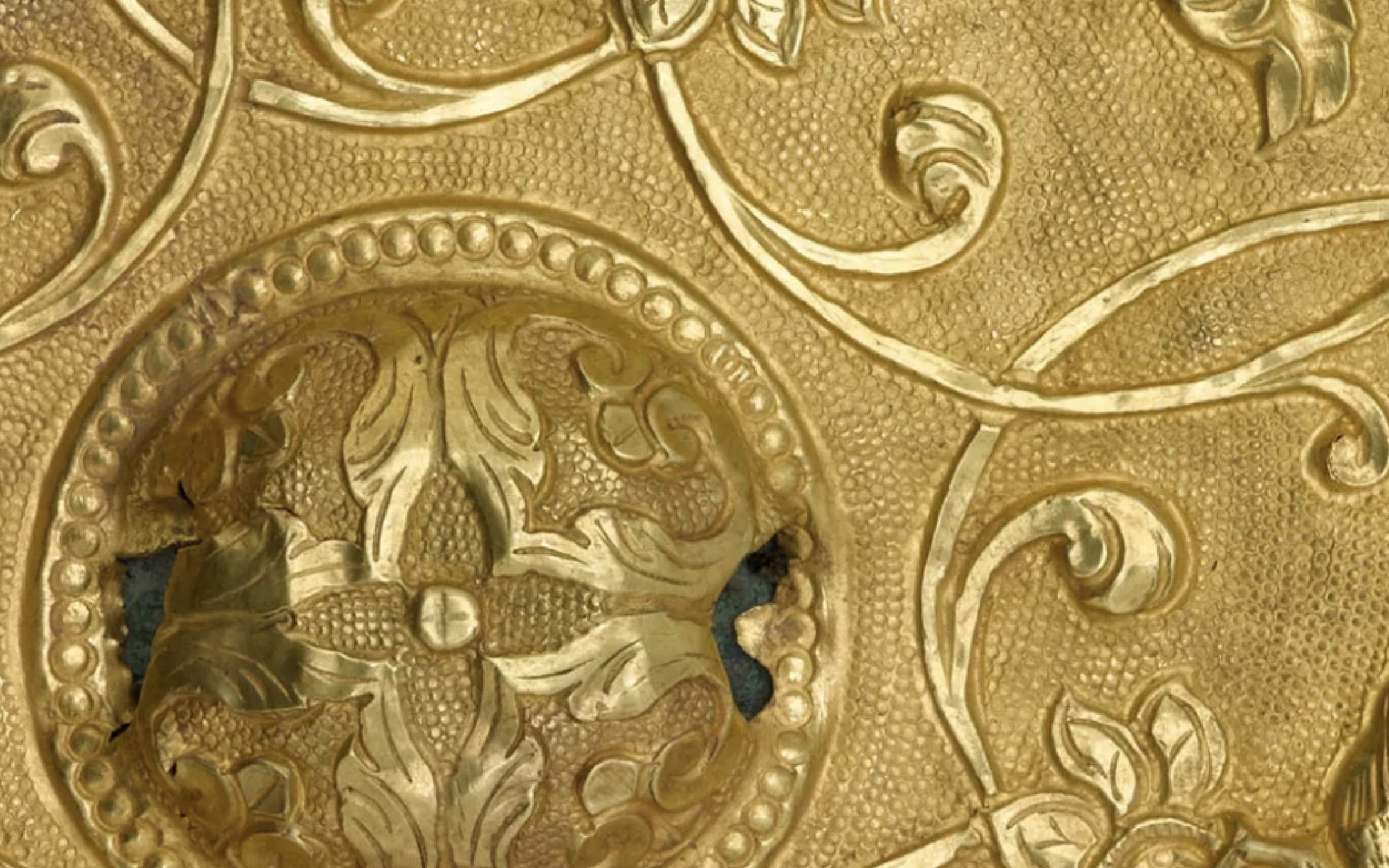Folio from an Arabic translation of De materia medica by Dioscorides (ca. 40-90 C.E.); recto: text; verso: Preparation of medicine from the flower of the wild vine

Terms of Use
Usage Conditions ApplyAt A Glance
-
Period
1224 (621 A.H.) -
Geography
Probably Baghdad, Iraq -
Material
Ink, opaque watercolor and gold on paper -
Dimension
H x W (overall): 33.1 x 23.2 cm (13 1/16 x 9 1/8 in) -
Accession Number
F1932.22 -
EDAN ID
edanmdm:fsg_F1932.22
Object Details
-
Calligrapher
Abdallah ibn al-Fadl -
Author
Pedanius Dioscorides (died 90 CE) -
Description
Detached folio from an Arabic translation of De Materia Medica by Pedanius Dioscorides; text: Arabic in black and red naskh script; recto: text, one column, 13 lines; verso: illustration and text, Preparation of medicine from the flower of the wild vine, one column, 7 lines; one of a group of 9 folios. -
Provenance
?-?Aya Sofya Library, Istanbul [1]Likely by at least 1908-No later than 1931Fredrik Robert Martin (1868-1933), method of acquisition unknown [2]Likely by 1931-1932Hatchik Sevadjian (b. 1884), method of acquisition unknown [3]From 1932Freer Gallery of Art, purchased from H. Sevadjian (b.1884), through Kirkor Minassian (1874-1944) [4]Notes:[1] See Hugo Buchthal, “Early Islamic Miniatures from Baghdād” [journal] “The Journal of the Walters Art Gallery”, vol. 5, (1942): p. 20, “It has been known for some time that these miniatures were formerly part of a Dioscorides manuscript containing the two last books of De materia medica and the treatises De venenis and De iis quae virus ciaculantur animalibus. The manuscript was until recently preserved in the Hagia Sophia Library and is now in the Top Kapi Saray in Istanbul.” See also Glenn D. Lowry and Milo Cleveland Beach “An Annotated and Illustrated Checklist of the Vever Collection” [exhibition catalog] (Washington, DC: Arthur M. Sackler Gallery, Smithsonian Institution; Seattle and London: University of Washington Press, 1988), p. 55, and footnote 6, “The two pages in the Vever Collection are among at least thirty-one illustrated folios that were removed at the turn of this century from a lavish copy of the Materia Medica dated June-July 1224. The corpus of the text – containing 202 folios from the fourth and fifth books, two other treatises by Dioscorides, and a work by Hunayn b. Ishaq – is in the Süleymaniye Library, Istanbul.” Footnote 6 cites the source as “Aya Sofya no. 3703. Formerly in the Aya Sofya Kütüphanesi, Istanbul.” Additionally, see Ernst J. Grube, “Materialien zum Dioskurides Arabicus”. In “Aus der Welt der Islamischen Kunst,” edited by Richard Ettinghausen [book] (Berlin: Gebr. Mann), no. VI, pp. 172-178. On page 172, he writes, “Dreißig Blatt mit Miniaturen aus dieser Handschrift befinden sich in fünfzehn verschiedenen öffentlichen und privaten Sammlungen Europas und Amerikas. Nur eine einzige Miniatur mit einer figürlichen Darstellung ist in der Handschrift verblieben (Fol. 2r).”In the mid twentieth century, some scholars mentioned that the manuscript had been moved from the Aya Sofya Library to the Topkapi Palace.Thereafter it went to the Süleymaniye Library, which has been the national repository for manuscripts in Türkiye since 1918. This painting was removed from the manuscript at an undetermined time before its transfer to the Topkapi Palace. See note 2.[2] Amongst Martin’s peers, it was recognized that the folios were part of the manuscript known as Aya Sofya 3703, and that Martin was the first owner of the detached folios. See F.R. Martin, “The Miniature Painting and Painters of Persia, India, and Turkey from the 8th to the 18th Century [book] (London: Bernard Quaritch, Sr., 1912), vol. 1, p. 111. In the “List of Painters”, Martin wrote the following entry: “Abdallāh ibn al-Fadl, who painted: the miniatures in the Dioscorides Manuscript, part of which is in the possession of the author, dated A.H. 619 (A.D. 1222).” As early as 1929, Martin is cited as having been the owner of the Dioscorides’ folios: “Leaves from this manuscript, which once belonged to F. R. Martin, are now scattered all over the world”, in M. S. Dimand “Dated Specimens of Mohammedan Art in the Metropolitan Museum of Art – Part II: Manuscripts and Miniature Paintings,” “Metropolitan Museum Studies” vol. 1, no. 2 (May 1929): 208. And in Hugo Buchthal, “Early Islamic Miniatures from Baghdād,” “The Journal of the Walters Art Gallery”, vol. 5 (1942): p. 20, “If we look for kindred works of art, it is at once evident that the famous Dioscorides miniatures, formerly belonging to Dr. F. R. Martin, are most related to our ‘Hippiatrica’ manuscript”. For a publication citing Martin’s ownership, see F.R. Martin “A History of Oriental Carpets Before 1800” [book] (Vienna: Printed for the author, with subvention from the Swedish government, in the I. and R. State and Court Printing Office, 1908), fig. 14, and F.R. Martin, “The Miniature Painting and Painters of Persia, India, and Turkey from the 8th to the 18th Century [book] (London: Bernard Quaritch, Sr., 1912), vol. 2, p. 1, pl. 7a; see also Ernst Kühnel, „Miniaturmalerei im Islamischen Orient“[book] (Berlin: Bruno Cassirer Verlag, 1922), pl. 4. Additionally, see Laurence Binyon, J.V.S. Wilkinson and Basil Grey, “Persian Miniature Painting: Including a Critical Descriptive catalogue of the Miniatures Exhibited at Burlington House, January-March, 1931” [book] (London: Oxford University Press, 1933), cat. no. 14, “For other reproductions, see” and refers the reader to the aforementioned manuscripts by Martin and Kühnel. Fredrik Robert Martin was a collector, connoisseur, author, and Swedish diplomat assigned to Istanbul for several years in the late 19th and early 20th centuries, during a time of significant political and social unrest across the Ottoman Empire. It remains unclear how Martin acquired the folios.[3] See December 30, 1931 letter from Minassian to Lodge. He writes “If you recall when I was in Boston I showed you some photographs of 13th century miniatures [date of Boston trip not identified]. I just received the balance of photographs of the entire set, and I am enclosing them herewith. The originals are in Paris.” Kirkor Minassian was a collector and dealer in Islamic and Near Eastern antiquities, with galleries in New York and Paris. Additional letters between Minassian and Lodge, dated January 29, 1932; February 2, 1932; February 4, 1932; February 12, 1932; February 25, 1932; and February 27, 1932 discuss the shipment, receipt, and details of the manuscripts, as well as identifying them as being in the collection of Mr. Sevadjian. Copies of all are in object file. Born into an Armenian family in Istanbul, Hatchik Sevadjian relocated to Paris in 1902. He became a diamond dealer, opening a shop along the rue du Faubourg-Montmartre, and a connoisseur collector, building a large collection of Greek, Roman, Egyptian, Indian, and Islamic antiquities.[4] See object file for copy of Kirkor Minassian invoice to Freer Gallery of Art, dated April 12, 1932. See also note 1.Research updated March 16, 2023 -
Collection
Freer Gallery of Art Collection -
Exhibition History
East of Eden: Gardens in Asian Art (February 24 to May 13, 2007)Arts of the Islamic World (May 3, 1998 to January 3, 2016)Near Eastern Ceramics (May 14, 1981 to May 10, 1985)Art of the Arab World (August 15, 1980 to May 13, 1981)Art of the Arab World (May 8, 1975 to August 20, 1977)Special Exhibition (February 9, 1954 to April 20, 1954)Untitled Exhibition, Islamic Manuscripts, 1947 (October 6, 1947 to February 25, 1956)Untitled Exhibition, Persian Manuscripts (May 5, 1933 to September 22, 1947) -
Previous custodian or owner
Fredrik Robert Martin (1868-1933)Hatchik Sevadjian (born 1884)Kirkor Minassian (1874-1944) -
Origin
Probably Baghdad, Iraq -
Credit Line
Purchase — Charles Lang Freer Endowment -
Type
Manuscript -
Restrictions and Rights
Usage Conditions Apply
There are restrictions for re-using this media. For more information, visit the Smithsonian's Terms of Use page.
The information presented on this website may be revised and updated at any time as ongoing research progresses or as otherwise warranted. Pending any such revisions and updates, information on this site may be incomplete or inaccurate or may contain typographical errors. Neither the Smithsonian nor its regents, officers, employees, or agents make any representations about the accuracy, reliability, completeness, or timeliness of the information on the site. Use this site and the information provided on it subject to your own judgment. The National Museum of Asian Art welcomes information that would augment or clarify the ownership history of objects in their collections.
Keep Exploring
-
Related Resources
-
Date
-
Name
-
Place
-
Topic
-
Culture
-
Language
-
Object Type

